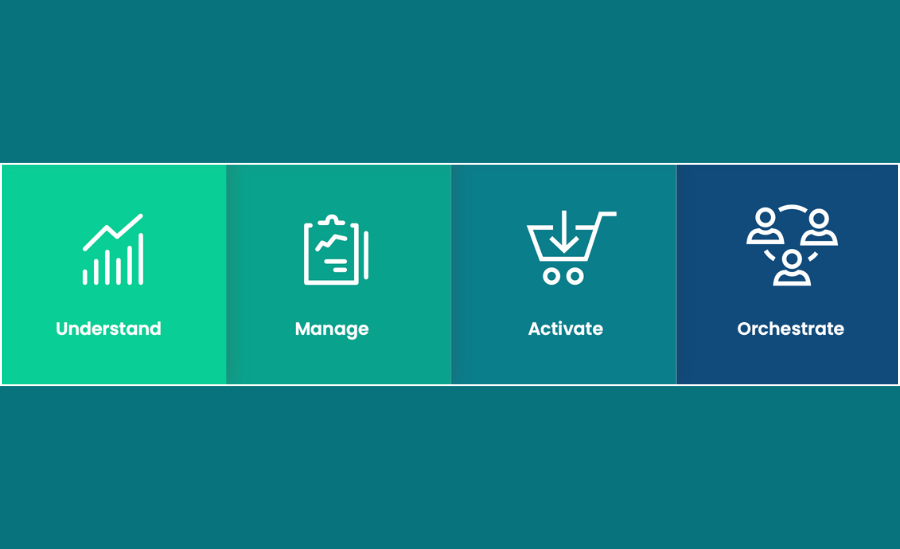Sponsored content

Why is it crucial for retailers to own their data?
When retailers own their shopper data, they’re not just collecting information; they’re unlocking the keys to incredible growth. Imagine your data as your most trusted advisor, who understands your shoppers better than anyone else. It tells you exactly what your customers want when they want it and even predicts how they’ll respond to your promotions. By fully controlling this valuable information, grocers can dive deep into consumer habits, preferences, and buying behaviors. This helps you tailor your offerings, create highly personalized shopping experiences, and ultimately build happier, loyal customers who return repeatedly.
Owning your data also means you’re no longer reliant on third-party intermediaries, giving you the freedom to optimize marketing strategies, streamline operational efficiencies and secure a significant competitive advantage. Retailers who leverage their own data typically experience increased customer retention and larger baskets. (Birdzi)
What steps should retailers take to handle their data effectively?
First, consolidate your data from multiple channels, including in-store purchases, online shopping and mobile app interactions, into a centralized, accessible platform. Think of this like organizing your home: everything should have its proper place, making your life easier and more efficient. Breaking down these data silos ensures consistency, accuracy and a complete picture of customer interactions.
Next, keep your data clean and trustworthy. Regularly audit, clean and validate your datasets to eliminate inaccuracies, duplications and inconsistencies. This ensures that the insights you draw are always reliable and actionable. Then, use advanced analytics and AI to interpret your data, revealing powerful insights that inform strategic decisions.
However, retailers often face challenges such as privacy compliance, complex technology integration and initial investment costs. Mitigate these by selecting trusted partners, adopting scalable solutions and ensuring compliance through robust data governance.
Finally, continuously measure the effectiveness of your strategies, fine-tuning your approach based on what resonates most with shoppers. This ongoing cycle ensures your business remains agile, relevant and continuously improving.

How can retailers use their data to truly understand their shoppers?
Understanding shoppers means looking closely at their buying patterns, like noticing your friend always craves ice cream on weekends. Analyze shoppers’ purchase histories, visit frequencies, basket sizes and product preferences to reveal insightful patterns. Segment customers into clearly defined groups such as “weekend grill enthusiasts,” “organic-only shoppers” or “busy families seeking convenience.”
For example, a regional grocer recently segmented their customers based on purchase frequency and product choices, leading to a 38 percent increase in in-store visits. (Birdzi)
Clearly identifying these segments enables you to craft targeted promotions, personalized offers and meaningful interactions that resonate deeply. Enhanced loyalty programs, personalized recommendations, and timely interventions for customers drifting away can dramatically boost engagement and customer retention.
How can grocery retailers use data to excite and activate shoppers?
Data-driven promotions create genuine excitement by speaking directly to individual shopper preferences. Picture receiving a perfectly timed coupon for your favorite snack; it’s a delightful surprise tailored just for you. Leverage shopper insights to create hyper-personalized discounts, targeted communications, and dynamic rewards that encourage repeat visits and increased spending.
Additionally, predictive analytics enable you to recommend complementary products, increasing basket size and overall sales. For instance, retailers using predictive suggestions have reported an average monthly sales per shopper increase of 17 percent (Birdzi). When promotions and offers feel relevant, shoppers become more engaged, loyal and enthusiastic about their shopping experience, fueling sustained revenue growth.
How does orchestrating the shopper journey enhance customer satisfaction?
Orchestrating the shopper journey means creating smooth, cohesive experiences at every touchpoint, just like planning a memorable vacation perfectly. Consistent messaging, personalized offers, and seamless interactions across digital and physical channels make customers feel valued and understood.
By proactively anticipating customer needs through data-driven insights, retailers can provide timely recommendations and responsive support, enhancing customer trust and satisfaction. Continuously tracking and refining these interactions helps you discover fresh opportunities to elevate shopper experiences even further. Ultimately, orchestrating the customer journey ensures that every interaction is engaging, delightful and memorable.

What future trends should retailers watch?
Retailers should stay ahead by leveraging emerging trends such as generative AI for hyper-personalization, real-time inventory management through predictive analytics, voice-driven shopping experiences and augmented reality (AR) for immersive product exploration. These innovations can further personalize shopper interactions, enhance convenience and solidify brand differentiation in an increasingly competitive market.
How does Birdzi help retailers achieve all this?
Birdzi empowers grocery retailers with a comprehensive, user-friendly platform designed specifically for effectively managing shopper data. Our innovative technology centralizes data collection from various channels (including in-store, online and mobile apps), automatically cleans and validates information and leverages advanced analytics and AI to provide robust, actionable shopper insights.
Birdzi’s robust capabilities allow grocers to accurately segment customers based on their shopping behavior, demographics, and buying preferences, enabling precise predictions of customer needs. Retailers can then deliver hyper-personalized promotions, tailored communications and targeted marketing strategies that resonate deeply with shoppers, securing long-term loyalty.
Birdzi orchestrates the entire shopper journey, ensuring cohesive, personalized experiences at every stage. Our clients have achieved measurable success, including a 12X ROI and substantial improvements in overall customer lifetime value.
Ready to transform your retail experience and achieve similar success? Schedule your complimentary Birdzi demo today to start harnessing the full potential of your shopper data, delivering exceptional experiences, and driving measurable business growth.

About the author
Shekar Raman is CEO and co-founder of Birdzi, a grocery retail Al solutions company inspired by an idea his 11-year-old daughter had about locating products in the supermarket. He is passionate about building data-driven technologies leveraging AI and machine learning to help retailers and brands elevate the customer experience. Shekar began his career working on the Human Genome Project at the Department of Human Genetics at the University of Pennsylvania, developing algorithms for protein modeling.
Raman was part of some pioneering groups (early 1990s) in Biolnformatics at UPenn and at the Department of Human Genetics at UNLV, where he applied speech recognition techniques to identify and classify genetic sequences. He then continued onto AT&T Bell Labs, working in the speech recognition group as a consultant developing data collection algorithms, where he also acquired significant expertise in systems engineering. He later moved on to systems engineering, architecting and implementing infrastructure solutions for a large Fortune 500 company, working in both consulting and management roles.
Shekar Raman has a bachelor of engineering in electronics and communications from Osmania University in Hyderabad, India. He went to graduate school at Villanova University, where he obtained a master’s degree in electrical engineering with a focus on digital signal processing and pattern recognition.


